magic!Where do many galaxies come from the universe?Maybe we can go to the galaxy shipyard to see
Author:Astronomy online Time:2022.08.17
Galaxy Shipyard -G237 and Spipcezer Telescope
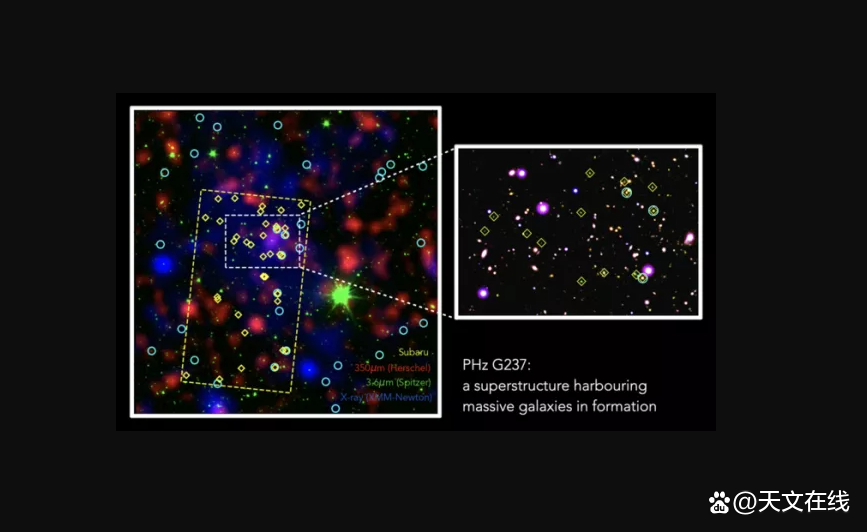
A huge galaxy "Shipyard" was discovered outside 11 billion light years
A similar original galaxy group may have created our galaxy system
The picture is the picture of the G237 original galaxy group. The color of the different galaxies represents different observation wavelengths (picture source: European Space Agency (ESA)/Herschel and XMM-Newton satellites; the National Aerospace Administration /Spitzer (SPITZER); Japan National Observatory (NaOJ)/Subaru (Subaru); Big Double Barbin Telescope (Arizona); Southern Observatory (ESO)/Visual Light and infrared Truck Mirror (Vista). Polletta, m) and others. 2021; Koyama (Koyama, Y) and others. 2021)
Astronomers discovered a huge "shipyard", where the galaxies cradle. Our galaxy is also born in a similar galaxy group.
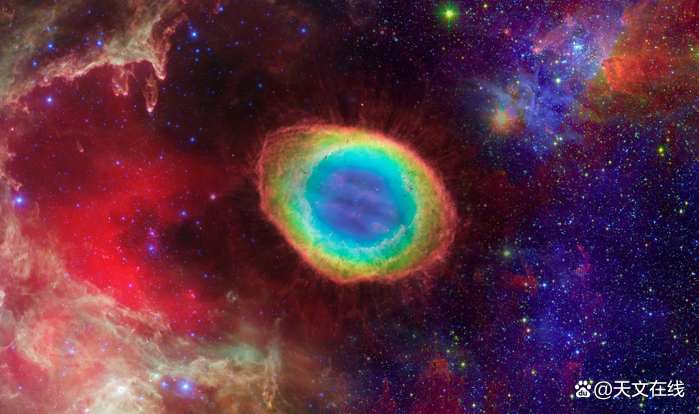
This huge structure, known as the original galaxy group, contains more than 60 galaxies. It is a distance of 11 billion light years from the earth. This is far from scientists that can only observe part of the history of 3 billion years.
Researchers published an article about the original galaxy group named G237 in January 2021. Its existence has been confirmed by the international astronomer team. These astronomers published their follow -up discoveries in the magazine of "Astronomy and Astronomy" on October 26.
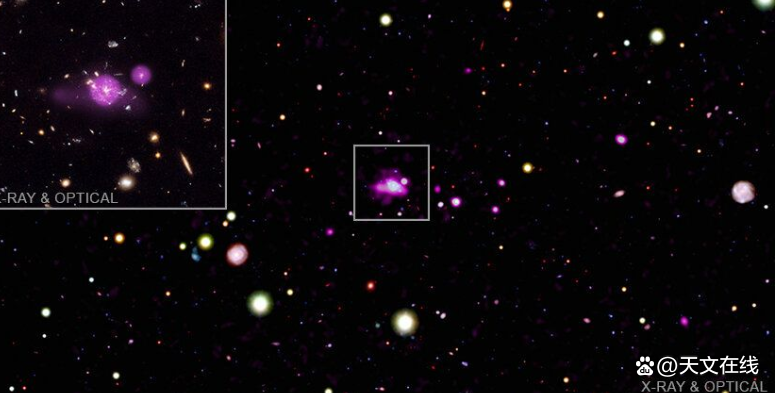
"You can regard the original galaxy group similar to G237 as a galaxy shipyard, where the huge galaxies are assembled here. At the beginning of only 3 billion years of birth, only this structure exists," Author, Branda Frye, associate professor of astronomy from the University of Arizona, said in the study statement.
According to Ferle, gravity gathers the stars and other celestial bodies to form galaxies, which tend to further gather into galaxies. However, because of the faint light emitted by these clusters, it cannot be observed in the form of visible light. Scientists know very little about the original galaxy group.

Researchers first observed the G237 in the Planck Telescope of the European Space Agency in the far -infrared area of the electromagnetic spectrum.
Now, scientists have confirmed its existence through subsequent observations. In the observation, they used the Big Double Telescope in Arizona, the Subaru telescope in Japan, the Hercheal Space Astronomical Observatory, the Spirzzer Space Telescope and related archives.
Early observations of G237 show that it is creating stars at a super -high but unsustainable speed. "Each of the 63 galaxies found in the G237 so far is like a star factory that runs at a high -speed operation," said Ferley. Just as the galaxy is assembled stars overtime.
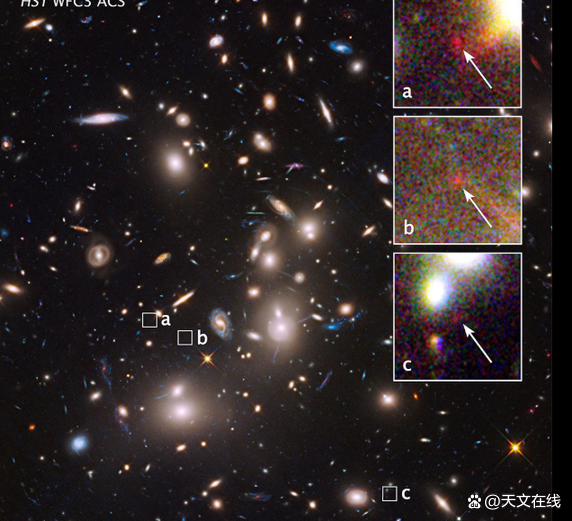
Hydrogen is an important fuel in the formation of star formation, but astronomers encountered a confusing problem at the beginning: the original galaxy group does not seem to have enough hydrogen to support such a high star -making speed.
Researchers discovered that some of the stars they observed were from galaxies that had nothing to do with G237. After removing these irrelevant observation data, the star production of the original galaxy group is still very high, so they believe that the original galaxy group like G237 can get enough hydrogen from dark strips or gas wires. These gas wires connect different galaxies to create "Universe". The intersection of these dark strips is also the birthplace of these original galaxies. This also means that the original galaxy similar to G237 can get enough hydrogen to make stars crazy.
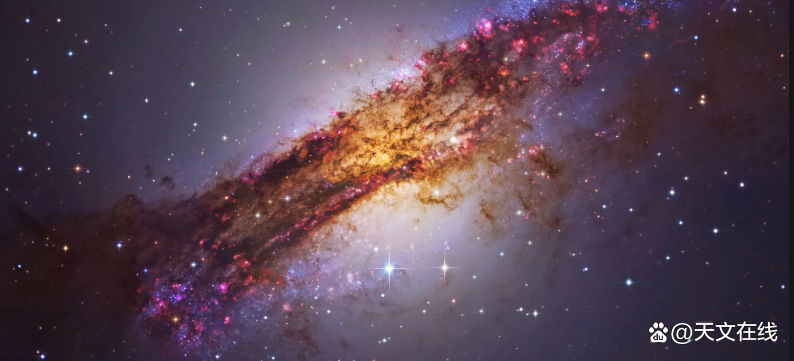
"We have completed a successful galaxy shipping factory puzzle. This shipyard has an efficient assembly of galaxies and stars in it, and has a steady stream of energy supply," Ferley said.
Sipzerzo Space Telescope, or Space Infrared Telescope Facilities (SIRTF), was launched in 2003 and retired on January 30, 2020. It is the third space telescope that serves infrared astronomy after IRAS (1983) and ISO (1995-98). Sipzerzo Space Telescope was the first spacecraft to track the orbit of the earth. This method was later used by the Cair Popler detector.

The planned task cycle of the Spipcezer Telescope is two and a half years. Before the launch, scientists predict that the task can be extended to 5 years or longer until the supply of the airborne liquid is exhausted. In fact, on May 15, 2009, the Sipzzzer Telescope did not have enough liquid to cool the telescope to the extremely low temperature required for running, and most instruments could not be used. However, the two short -wavelength modules of the IRAC camera continued to run the previous sensitivity with the low -temperature device, and continued to use in the "Spirzer Warm Mission" in early 2020.
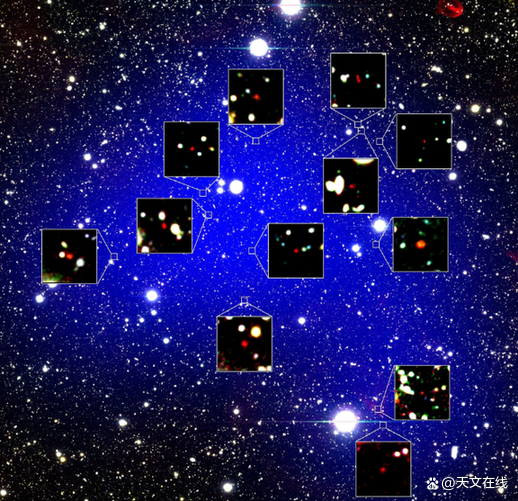
During the warm -up mission, IRAC's two short -wave modules work at 28.7k temperature. It is expected that there will be no degeneration compared with the task in normal conditions. These data are kept in the infrared science archives (IRSA) together with previous data.
On December 18, 2003, according to the tradition of the National Aeronautics and Space Agency, the telescope was renamed after a successful demonstration.Most of the telescopes named by the scientist committee will be named the name of the famous scientists, but scientists on Sirtf have taken a different approach and chose the name of a public astronomical competition.This name comes from Lyman Spitzer, a astronomer who promoted the space telescope in the 1940s.He wrote a report for RAND in 1946, describing the advantages of external observation stations, and how to use existing or upcoming technology to achieve it.It is precisely because of his pioneering contribution to Rockets and astronomy, and "the perspective and leadership ability reflected in the benefits of the realization of the space telescope plan", such a great telescope is named after Sipztiz.By: Patrick Pester
Fy: Fan Rui Sauce
If there is related content infringement, please contact the author to delete after the work is released
Reprinted, please obtain authorization, and pay attention to maintaining integrity and indicating the source
- END -
Time and space crowdsourcing, rail corner volume, virtual human face ... The first forum of the Lingnan Science Forum series of activities in 2022 opened

On June 25, the first forum of the Lingnan Science Forum Series The Fourth IEEE Co...
Agricultural Science and Technology in the past ten years | Xue Jiquan: Explore and promote the new model of corn gear quality collaborative innovation breeding

Interviewing Professor Xue Jiquan is the Agricultural College of the Northwest Agr...